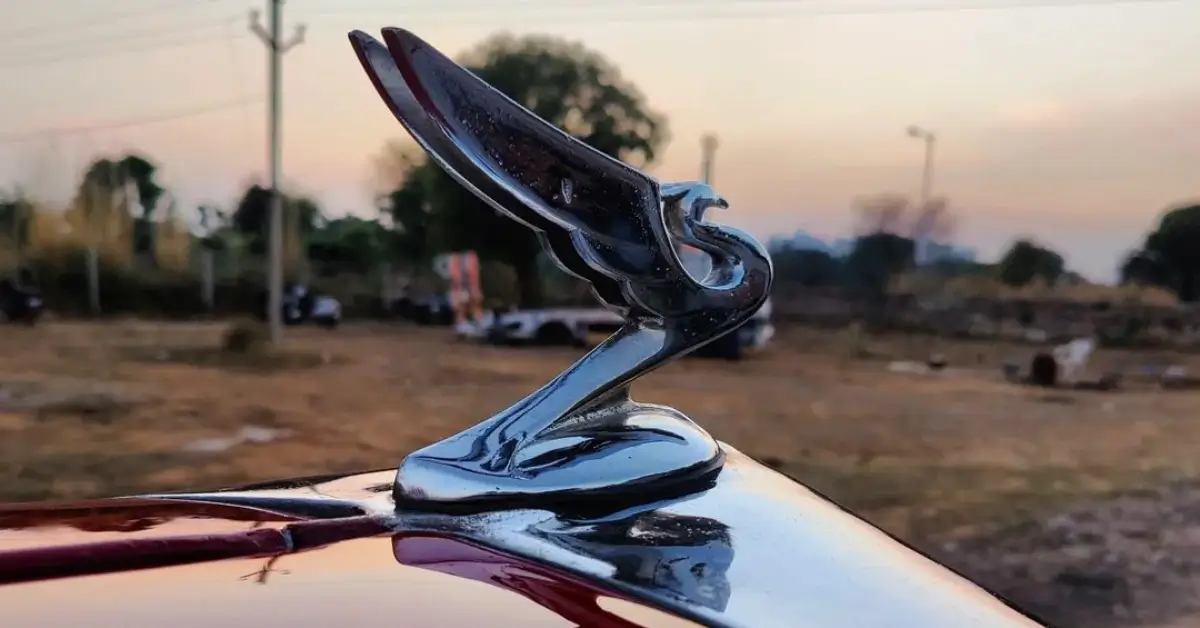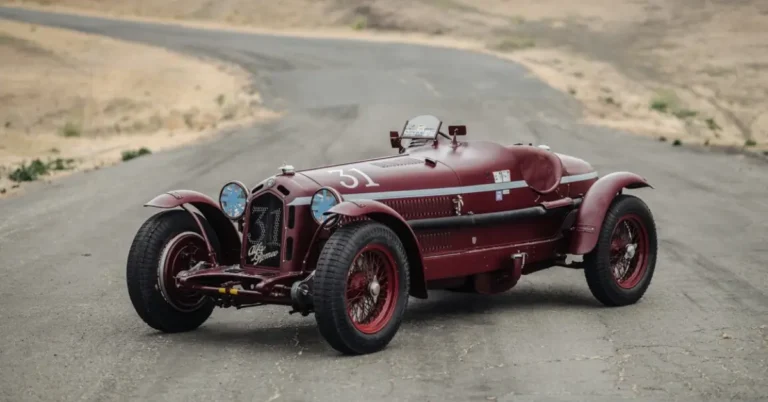Looking for some inspiration on vintage car logos? Or are you just interested in the history and the evolution of vintage car logos?
No matter what the reason for your visit is, I’m sure our guide on vintage car logos can give you some interesting insights. I’ve done research for several hours and visited forums and communities. What for?
To give you the latest and most relevant information about vintage car logos.
As well as some tips on where to find the real emblems and what to care about when collecting them.
Evolution of Vintage Car Logos
The logos of vintage cars are a window into the history and ethos of the automotive industry. We’ll discover how the symbols and trademarks that stood for quality and innovation evolved with the times.
Evolution of Design
The Early Origins of car logos often reflected the name and location of the manufacturer, with a focus on simplicity and recognizability. This straightforward approach laid the foundation for brand identity in the automobile industry.
As we moved into the era of Art Deco Elegance, car logos embraced geometric patterns and ornate details, exuding luxury and forward-thinking design. For instance, the classic car brands infused their logos with lavish embellishments that mirrored the Art Deco movement prevalent in the 1920s and 1930s.
With the advent of Streamlining in the Mid-20th Century, car logos began to reflect the sleekness and aerodynamic shapes that were dominating car design.
The logos became more dynamic, with curved forms suggesting speed and agility. This was a time when the concept of vintage car logos started to take shape, combining elements of progress with the allure of the past.
Iconic Brands and Trademarks
Amongst the pantheon of iconic brands, certain trademarks have become synonymous with their heritage and prestige. A glimpse at the logo of a vintage car like the Ford Model T reminds us of the industrial strength of early automotive pioneers.
Meanwhile, the winged emblem of Aston Martin, representing speed and aspiration, has gone through subtle iterations while maintaining its quintessential British charm.
Brands like Alfa Romeo have carried their historical emblems with pride, with each redesign subtly acknowledging their storied past. These enduring symbols serve not just as corporate identifiers but as trademarks of a bygone era, encapsulating the spirit of classic car culture in their very design.
Design Principles of Vintage Car Logos

In our exploration of vintage car logos, we focus on the harmonious blend of color, typography, and design aesthetics that define this timeless style. We’ll examine specific principles that make vintage car logo design so evocative of a bygone era.
Color Theory
Vintage car logos often employ a color palette that evokes a sense of nostalgia. We typically see colors that are muted and desaturated, including hues of beige, brown, green, and pale blue.
These tones give a vintage logo its classic and enduring appearance. When choosing colors, it’s crucial to select shades that harmonize well and reflect the era that the logo represents.
Typography and Shapes
The choice of typography and shapes in vintage car logos is critical to capturing the essence of the past. We often find typefaces with serifs or decorative elements that hark back to earlier design periods.
Fonts like Hollywood vintage, Bignord, and the Victoria Fonts Collection are common choices that contribute to a logo’s retro feel. Similarly, the shapes used are simple yet bold, often including intricate lines or embellishments that give depth and character to the design.
Logo Design Aesthetics
The aesthetic of a vintage logo design lies in its balance between classic elements and modern sensibility. The overall look should be distinctive yet familiar, capturing the spirit of the brand while ensuring the logo remains functional and legible.
Key design elements include the use of textures or patterns that may resemble wear and tear, signifying the logo’s age and history. Vintage logos should always convey the brand’s personality, using design choices that resonate with the period it represents.
Iconic Vintage Car Logos

When we discuss vintage car logos, some emblems stand the test of time, speaking volumes about the rich history of the automobile industry. Cadillac reigns as The Standard of Excellence with its classic laurel wreaths and crest, symbolizing luxury and prestige since its inception. The emblem’s evolution reflects the brand’s dedication to innovation and status.
The Chevrolet Bowtie is another cherished icon. Originating in 1913, the bowtie emblem has undergone numerous redesigns yet consistently serves as a recognizable symbol of the Chevrolet brand’s affordability and American heritage.
Ford’s Blue Oval encapsulates the journey of one of the world’s most enduring automakers. Adorning Ford automobiles since 1927, the logo’s simple design and bold color made it a symbol of durability and quality engineering.
The Mercedes-Benz emblem, a three-pointed star encased in a circle, signifies its dominance over land, sea, and air. It represents a symbol of luxury and innovation in the automotive world.
| Brand | Emblem Feature | Significance |
|---|---|---|
| Cadillac | Laurel wreath and crest | Luxury, prestige |
| Chevrolet | Bowtie | Affordability, heritage |
| Ford | Blue oval | Durability, engineering |
| Mercedes-Benz | Three-pointed star | Luxury, dominance, innovation |
These logos not only mark the identity of these monumental car makers but also capture the essence of the eras they represent.
If you want to dive deeper into vintage cars, have a look at our other vintage car articles like “Vintage Style Campers 2024: Discover 7 Stunning Retro Camping Trailers” or “Vintage Race Cars 2024: Latest Guide to Investing in Classic Speed” :
Collecting Vintage Car Logos

Collecting vintage car logos is an exciting journey into automotive history, connecting us with the artistry and design of bygone eras. We focus on the importance of authentic sourcing and the meticulous care needed for preservation.
Sourcing Original Logos
When we look for original vintage car logos, authenticity is paramount. We often turn to trusted online marketplaces such as eBay or Etsy where collectors and enthusiasts offer a variety of emblems.
Preservation and Restoration
When a vintage car logo becomes part of our collection, safeguarding its integrity becomes paramount. As stewards of these historical artifacts, our commitment lies in meticulously restoring each logo to its original splendor.
Collaboration with restoration experts, particularly those well-versed in vintage items, is a pivotal step in this process. Their expertise aids us in capturing the authentic colors and textures of the era.
To guarantee the enduring preservation of these delicate relics, we prioritize storing them in meticulously controlled environments. These climate-controlled settings not only protect the logos from the ravages of time but also ensure their continued condition and appreciation in value for generations to come.
Creating and Reproducing Vintage Logos

When we set our sights on vintage logos, it’s crucial to consider both the creative vision and the practical steps to bring that vision to life. Whether we engage with professional design services or harness the power of DIY logo creation tools, understanding each path’s benefits allows us to achieve that timeless aesthetic.
Professional Design Services
Freelance Designers provide a personalized touch to our logo creation journey. By collaborating with a skilled professional, we can tailor the design to fit our specific branding needs.
We can either directly hire a designer or opt for a logo contest, where multiple designers submit their interpretations of our brief, allowing us to select the most compelling vintage logo that resonates with our brand’s personality.
Creative Direction is essential in this process. As we work with these professionals, our input on the style, colors, and typography guides the design to ensure the result aligns with our vision while standing out in the marketplace.
DIY Logo Creation Tools
For those of us who prefer a hands-on approach, DIY Logo Creation Tools like Logomaker platforms offer a cost-effective and quick alternative to produce a logo.
These tools typically provide a selection of vintage-themed templates that we can customize to some extent—tweaking the color palette, adjusting font choices, and adding icons that reflect our brand’s vintage character.
While this approach grants us more immediate results, it often requires a balance between the tool’s limitations and our creative aspirations. Yet, it’s a solid starting point for us to develop a professional-looking logo with a vintage flair.
Using Vintage Car Logos Today

In our modern marketplace, the usage of vintage car logos is a strategic play in branding and content marketing while being subject to legal considerations.
Branding and Marketing
We recognize that vintage car logos have a unique appeal, often evoking a sense of nostalgia and distinction. They are leveraged as a key component in branding strategies, helping businesses stand out.
For instance, on platforms like iStockPhoto LP, you will find an array of vintage logos utilized to capture the essence of retro sensibility. This tactic not only appeals to car enthusiasts but also to a broader audience that appreciates the elegance of bygone eras.
Strategically, we use vintage motifs to create a memorable brand identity. This can involve:
- Using the logo on merchandise
- Displaying the logo at events
- Incorporating the logo into promotional materials
Legal Considerations
When using these logos, we must navigate the legal implications with due diligence. Trademark laws protect brand logos, including vintage ones.
We must ensure that any logo or elements thereof incorporated into our marketing materials are clear of any trademark infringement risks. This means, before sign-in or usage, conducting thorough research and potentially seeking legal counsel.
Here’s a brief overview of what we consider:
- Trademark Availability: Check current trademark registers to confirm if the logo is available.
- Copyright Status: Determining if a logo is in the public domain or if the copyright is still active.
By paying careful attention to these legal aspects, we ensure that our use of vintage car logos is above board and sustainable in the long term.
What styles were popular for vintage car logos?
Stylized script or serif typefaces resembling fancy sign painting were most common, along with circular badges containing the marque name. Simpler designs using just the initials also became popular.
Did vintage car logos change much over the years?
Logos tended to change gradually, usually just being refined over time rather than completely redesigned. Major styling changes often happened when a new owner or designer took over. Core elements like badges and initials usually remained consistent.
Why were logos important on early cars?
Logos helped promote car companies and build brand identity in the early days before widespread advertising. They identified the maker and model and functioned as a status symbol denoting luxury and quality to other drivers.
What elements were usually included in vintage car logos?
Most logos incorporated the manufacturer’s or marque’s name, often in an ornate or hand-lettered script. Emblems or badges were common, sometimes including additional details like a crest, flag, colors or initials. Simple geometric shapes and designs also featured.
If you liked my article about vintage car logos, please leave a comment down below.








